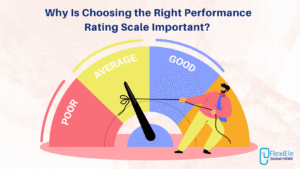
In today’s dynamic and competitive business landscape, organizations are constantly seeking ways to optimize their workforce and drive performance. A key component of effective human resource management lies in the implementation of robust performance evaluation systems. At the heart of these systems are performance rating scales, tools used to assess employee performance against pre-defined criteria.
This article delves into the critical role of performance rating scales, exploring their purpose, types, benefits, and the potential pitfalls of choosing the wrong scale. We’ll also examine factors to consider when selecting a scale, best practices for implementation, and future trends shaping the landscape of performance evaluations.
Overview of Performance Rating Scales
Performance rating scales provide a structured framework for evaluating an employee’s contributions, behaviors, and overall effectiveness within their role. They translate subjective observations into quantifiable data, allowing for comparison, tracking progress, and identifying areas for improvement. Essentially, they serve as a measuring stick against which employee performance is gauged.
Types of Performance Rating Scales
- Graphic Rating Scales: These scales use a numeric or visual continuum (e.g., a 1 to 5 scale) to measure various attributes, such as communication skills, teamwork, or productivity.
- Behaviorally Anchored Rating Scales (BARS): BARS provides specific examples of behavior tied to each performance level. Instead of just a number, employees see how their actions translate into scores, making the feedback more meaningful.
- Other Types and Their Applications: There are also holistic approaches and forced-choice formats, each catering to different needs and industries.
Benefits of Using Performance Rating Scales
- Standardization of Evaluations: A well-defined rating scale creates consistency in evaluations, ensuring that all employees are assessed uniformly.
- Facilitation of Performance Discussions: A structured scale offers clear metrics, which can help facilitate conversations about performance between employees and managers.
- Alignment with Organizational Goals: When the scale is well-crafted, it aligns individual performance metrics with broader organizational goals, guiding employees toward success.
Factors to Consider When Choosing a Scale
Selecting the wrong performance rating scale can have significant negative consequences for employees, the organization, and its legal compliance.
Consequences on Employee Morale
If the performance rating scale is poorly designed or administered, employees may perceive the evaluation process as unfair or biased. This can lead to feelings of resentment, distrust, and decreased morale. For example, a scale that relies heavily on subjective traits without clear behavioral examples can be easily manipulated or influenced by personal biases.
Misalignment with Organizational Goals
If the performance rating scale does not accurately reflect the key drivers of organizational success, it can lead to discrepancies between performance outcomes and organizational targets. For example, a scale that focuses solely on individual performance without considering teamwork or collaboration may discourage employees from working together effectively.
Potential Effects on Productivity and Engagement:
When employees feel that their performance is not being accurately assessed, they may become disengaged and less motivated to perform at their best. This can lead to decreased productivity, increased absenteeism, and higher turnover rates. A poorly designed performance evaluation system can ultimately undermine employee morale and negatively impact the organization’s bottom line.
Legal and Compliance Risks
Poorly designed evaluations can lead to legal disputes, grievances, and possible claims of discrimination. This emphasizes the importance of choosing a fair and transparent method for performance evaluation.
3. Factors to Consider When Choosing
Poorly designed performance evaluations can expose the organization to legal and compliance risks. If the scale is discriminatory or biased, it can lead to claims of unfair treatment and potential lawsuits. For example, a scale that relies on stereotypes or irrelevant personal characteristics can be challenged as discriminatory.
Factors to Consider When Choosing a Scale
Nature of the Job Role
Different job roles demand different evaluation criteria. For instance, technical roles may require stringent measures on technical skills, whereas non-technical roles might emphasize soft skills and teamwork.
Organizational Culture
Understanding the organization’s culture is vital when choosing a performance rating scale. Selecting a scale that resonates with employees’ values fosters acceptance and engagement.
Stakeholder Expectations
Managers play a significant role in performance evaluations, but it’s crucial to gather input from employees too. Their feedback helps in selecting a scale that everyone feels comfortable with and trusts.
Best Practices for Implementing Performance Rating Scales
Training Evaluators
Training sessions for evaluators ensure consistency in how evaluations are conducted. This builds trust in the system and enhances the skills of those performing evaluations.
Regular Review and Feedback Mechanisms
Creating feedback loops allows organizations to review and improve their evaluation processes over time. This adaptability is key to ensuring that the scales remain relevant and effective.
Communicating the Process Clearly
Transparency in how evaluations are conducted is crucial. Engaging employees in understanding the purpose and process behind the performance rating scale can increase buy-in and reduce apprehension.
Future Trends in Performance Rating Scales
- Shift Towards Continuous Feedback
A growing trend is the movement away from annual review cycles. Organizations are embracing continuous feedback, offering real-time insights that benefit employees in their day-to-day work.
- Technology in Performance Evaluations
The use of performance management software and applications simplifies assessments and brings accuracy through data analytics, making evaluations more efficient and comprehensive.
- Evolving Employee Expectations
Today’s employees, especially across generations, are changing how they view performance evaluations. There’s an increasing desire for personalized feedback and recognition, emphasizing the need for scalable yet adaptable evaluation systems.
How FlexiEle help in choosing the right Performance Management rating scale?
Managing performance ratings can be a bit of a juggling act, especially when access is limited to just the performers themselves.
- Personalized Rating Scales:
FlexiEle lets you create customized rating scales that fit your organization’s style, whether you prefer a straightforward numerical scale, detailed descriptive levels, or a mix of both.
- Privacy-First Approach:
Access to PMS data is locked down to the performers themselves, ensuring that sensitive information stays secure and only the right eyes can see it.
- Tailored Goals and KPIs:
It’s not a one-size-fits-all system – you can set personalized goals and KPIs based on the performer’s role, team, or even their individual career path, making the ratings more meaningful.
- Smooth, Automated Processes:
FlexiEle can automate everything from goal setting to periodic reviews, cutting down on admin time and helping everyone stay on track.
- Real-Time Feedback and Progress:
Continuous feedback and real-time progress tracking ensure that performers get the recognition they deserve and have a clear view of their growth.
Conclusion
Choosing the right performance rating scale is not merely an operational decision—it shapes the entire culture of feedback and growth within an organization. By understanding the nuances of performance rating.

